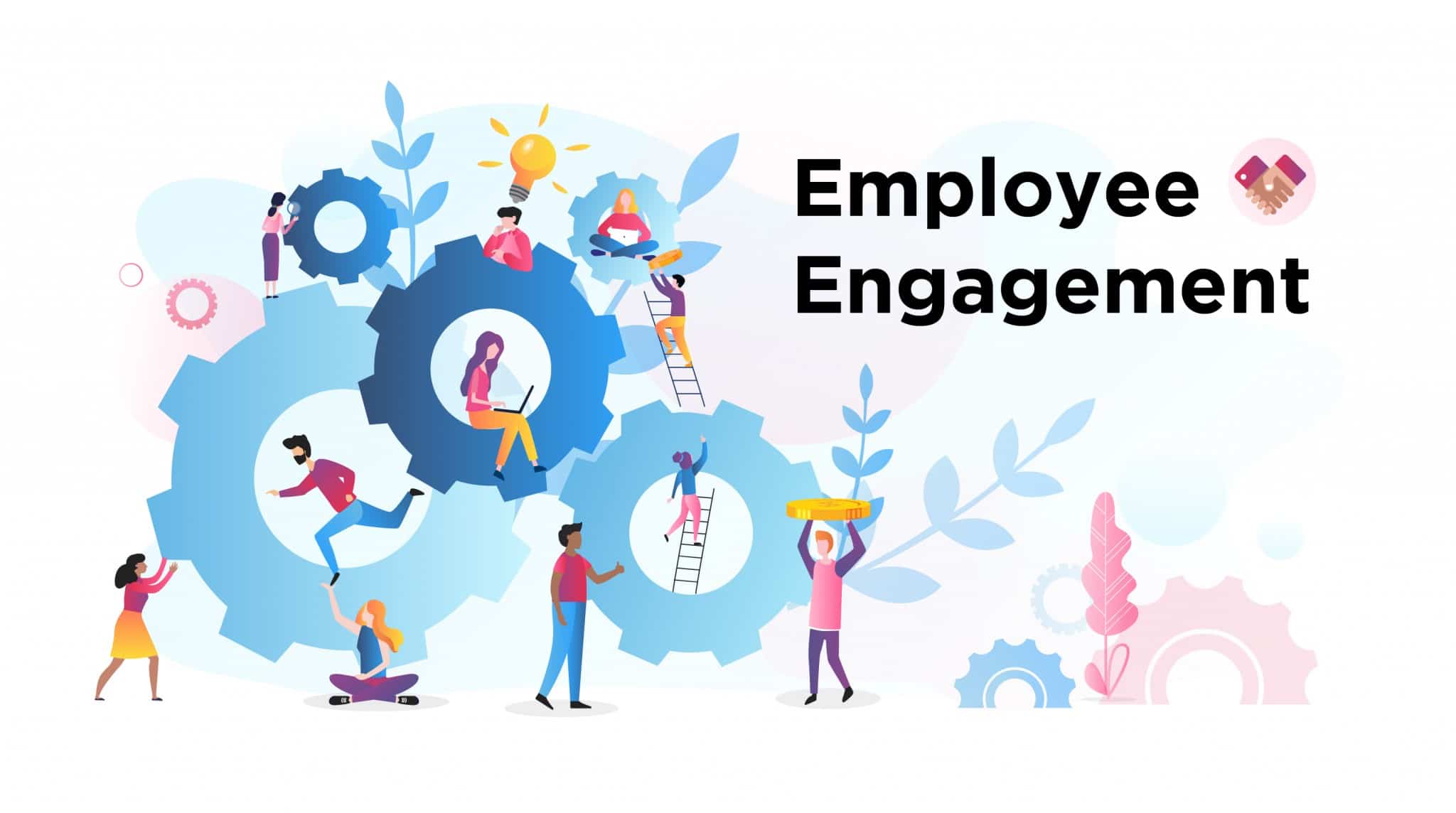Beyond Benefits: Crafting a Comprehensive Employee Engagement Strategy for a Thriving Workplace

Every organization needs an environment that has a thriving workplace through an employment engagement strategy. But in order to achieve sustainable improvement in employee engagement, organizations need to do more than just offer office benefits and perks.
The backbone of a workplace is not just the modern technology or the physical structure, but it is also the people who work there. A well-engaged team strengthens the foundation of an organization. And to build that team, you need to create a thriving workplace that requires a comprehensive approach to employee engagement strategy.
What is employment engagement?
Employee engagement is the strength of mental & emotional connection employees feel towards an organization that they are working in and their work. Companies are able to strengthen thai with the help of employee engagement strategy.
To create an effective strategy, you first need to determine the different types of engagement. These include;
1. Engaged:
Engaged workers who have a strong emotional commitment to their jobs experience a profound sense of purpose and meaning in their work. This deep connection not only makes for a calm environment for their coworkers but also creates passion and dedication towards the organization. The workers aren’t simply working for a salary or the next career opportunity, instead, they possess a genuine passion for their work and are motivated to contribute to the organization’s success.
2. Not Engaged:
Employees who lack engagement often show very little dedication and passion towards their work. Their lack of investment in the organization’s success means that they may frequently fail to meet deadlines, and have a negative impact on productivity and client relationships. Furthermore, their communication with leaders and co-workers may be ineffective, and they may struggle with collaborative efforts.
3. Actively Disengaged:
Disengaged employees do not possess the same level of dedication as engaged employees. Not only are they dissatisfied in their own work and role in the organization, but they also spread negativity among their colleagues. This can be lead to a decrease in morale in the organization. Disinterested workers won’t show any interest in problem-solving, process improvement, collaboration, or innovation. In fact, they might even sabotage the efforts of other co-workers.
Why is a thriving workplace important for a business?
Employee engagement strategies can help organizations greatly influence the morale of employees and can significantly affect its overall cost and profitability.
When we think about the financial effects of engagement, it’s important to examine how it can enhance profitability when employee engagement is high.
❖ Increased Productivity: Employees who are fully committed to their work tend to stay motivated and perform consistently, leading to increased productivity.
❖ Reduce stress: Engaged employees have a reduced chance of facing stress and burnout, leading to improved performance, fewer absences, and less likely to seek another job.
❖ Less Turnover: Engaging employees can lead to change in an environment where the employees not only engage with each other but support as well. This can directly help a company better retain talent, eliminate toxic behavior, and reduce their turnover.
❖ Good Customer Service: Highly engaged employees can feel more motivated to provide better customer experience.
❖ Employee opinions: Engaged employees are enthusiastic ambassadors for their organizations, spreading positive vibes through various channels like social media and even among their friends. Their advocacy not only helps attract top talent but also helps boost the image of the company.
But how does one create an employee strategy for their business?
Ways to create broad Employee Engagement Strategy:
The following are the ways to create a broad employee engagement strategy;
Clarity:
Employees require well-defined objectives to strive for, and it is equally crucial for them to be aware of the expectations placed upon them while they strive to achieve these objectives. This is possible by providing clarity on goals and expectations and making it simple so that the goal of the employee is aligned with the goal of the organization. It can also help employees focus more energy on their achievements and leaders can now work with a more satisfied employee.
Some and many ways that leaders can ensure they are providing a clarity that the employees need are through coaching and mentoring. Another way to do that is by setting S.M.A.R.T goals together with their employee. This helps them understand what their goals are & how it contribute to the larger goals of the organization.
Make sure to give tools:
To produce high quality work, avoid delays that can cause setbacks & avoid unnecessary stress, all workers need their access to the right technological tools to do their jobs. Many organizations overlook the importance of giving their employees effective tools to perform their tasks. The equipment that they are using can directly affect their productivity, which can also affect their morale.
Recognition and Appreciation:
Recognition is very important because it meets a core human need for both the employee & the manager. This Meeting need is a key aspect of a strong orgnanization culture because it increases job satisfaction, employee engagement, retention, and quality of work.
Appreciation, acknowledgment, and celebration of people’s hard work, achievements, and success of employees let them know that they are valued and the work they do has an impact. Recognition builds trust, boosts morale, increases employee retention and loyalty and improves performance.
Feedback:
Feedback culture in organizations helps employees give feedback from the upper level of management and they are empowered & encouraged to provide meaningful feedback to co-workers and leadership.
Whether it’s praising an employee’s achievements, offering ideas about improving processes or suggesting behavioral changes can make employees feel a lot more appreciated. In an organization where feedback is normal, frequent dialogs between employees at all levels of the organization is common and a high level of trust that supports employee motivation.
To successfully implements a culture of feedback, leaders can demonstrate communication style that improves the organization & its employees by emphasizing listening, understanding & deep reflection over focusing on or reacting to any one individual’s views.
Leverage employee strength:
Leveraging employee strengths by putting team members with diverse strengths on a team can supercharge collaboration and boost individual team member engagement. This is done by monitoring the employees and seeing, which field they are interested in and are good at. Then, create a group that has people who are excellent and talented in different fields.
Conclusion:
These strategies collectively contribute to a holistic approach to employee engagement, creating a workplace where the employees feel valued and motivated, and are committed to contributing their best efforts to the organization’s success.






